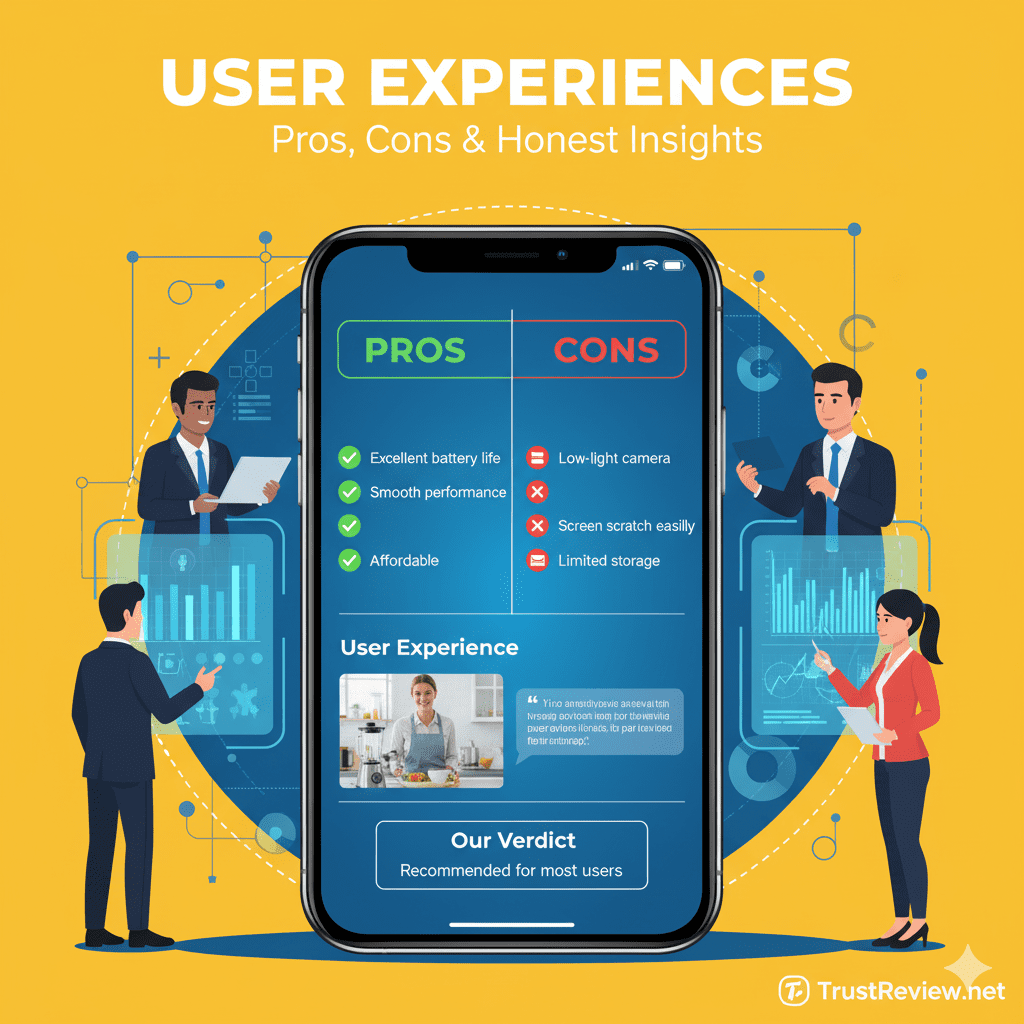When it comes to purchasing a product or service, the most valuable insights often come from the users themselves. User experiences, paired with a clear breakdown of pros and cons, provide potential buyers with a well-rounded perspective. This combination helps build trust, set realistic expectations, and guide decision-making. Let’s explore how businesses can use user experiences effectively to highlight both the benefits and drawbacks of their offerings.
1. Start with Real User Experiences
User experiences serve as real-world testimonies of how a product or service performs. These stories are particularly valuable because they come from individuals who have used the product in everyday settings. To create authentic content, collect and showcase feedback from customers who share their honest opinions, both positive and negative. Including diverse perspectives—whether from expert reviewers, first-time users, or long-term customers—offers a fuller view of the product’s value.
Example:
“I’ve been using this blender for six months, and it still works like new. The design is sleek, and it blends even tough ingredients in seconds. I wish the cord was a bit longer, but it’s been a great addition to my kitchen!”
— Real User Experience
2. Highlight the Product’s Pros
Focusing on the advantages of a product is essential in demonstrating its value. List the benefits in an easily digestible format, such as bullet points or short paragraphs. Be specific about how the product solves common problems, meets customer needs, or exceeds expectations. Real user experiences can provide examples of how the product excels in particular areas, like durability, ease of use, or affordability.
Example Pros for a Smartphone:
Excellent battery life, lasting up to 2 days with heavy usage.
Smooth performance, even with multiple apps running.
Affordable compared to competitors in the same category.
3. Discuss the Cons Honestly
While it’s tempting to focus only on the positives, a transparent review includes potential downsides. Every product has its limitations, and acknowledging them builds credibility and trust with readers. Be sure to explain the cons in context—what might be an issue for one user may not be significant for another. Offering solutions or alternatives to these drawbacks can also help guide customers toward making informed choices.
Example Cons for the Same Smartphone:
The camera quality could be better in low-light conditions.
The screen may scratch easily without a protective case.
Limited internal storage, especially for users who download a lot of apps.
4. User Experience: The Heart of the Review
The heart of any review lies in the real-life application of a product or service. How does it perform under actual usage conditions? Did it live up to the expectations set by the manufacturer or marketing? Incorporate detailed accounts of how users interacted with the product over time, noting any issues they encountered and how those issues were resolved. This helps other customers form realistic expectations and avoid surprises.
5. Creating a Balanced View: Pros vs. Cons
A well-balanced comparison of pros and cons allows readers to weigh the product’s strengths against its weaknesses. You might even create a simple pros and cons table for clarity. The key is to remain honest and fair—acknowledging what the product does well, while also addressing areas for improvement. A balanced perspective helps potential buyers make decisions that are aligned with their own needs and priorities.
6. Wrap Up with Recommendations
Conclude your review with a final assessment based on user feedback. Consider who would benefit most from the product, whether it’s worth the investment, and how it compares to other options. Offering a conclusion that’s based on a combination of pros, cons, and user experiences ensures that readers have a well-rounded understanding of the product before making a decision.
Conclusion
User experiences, when coupled with a detailed pros and cons breakdown, provide a comprehensive picture that helps potential buyers make more informed decisions. By offering honest feedback and addressing both strengths and weaknesses, businesses can create trust with their customers while setting realistic expectations. When customers feel confident in their purchase, they’re more likely to return and recommend your brand to others.




Comments (0)